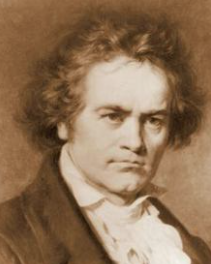
Beethoven was a trailblazer of Romanticism, and anticipated elements of jazz, a genre that wouldn’t emerge for another century.
There are two examples—one from his first piano sonata and the other from his last. Each illustrates how his innovative approach to rhythm and harmony hints at the syncopations later integral to jazz which was born in New Orleans and is in America's DNA.
In the first piano sonata, the emphasis on beats 2 and 4 is a remarkable early example of what would become a defining feature of jazz: the backbeat. This “offbeat” accentuation is central to much of jazz rhythm, and it’s amazing that Beethoven, even at such a young age, was experimenting with it. It gives the music a sense of swing, a rhythmic tension that propels the music forward. This syncopation, while subtle in Beethoven’s work, became more pronounced in jazz, particularly in the way drummers would leave the 1st and 3rd beats open, allowing all soloists to push and pull with the rhythm.
https://www.youtube.com/watch?v=9oIdtq9E2ZU
Then there is a passage in the final movement of Beethoven's Piano Sonata No. 32 that is even more remarkable. Here, we can hear a rhythm that’s almost unmistakably "swinging," a hallmark of jazz. The triplet feels and the rhythm of the chords played on the downbeat and “and” of beat 2 bring to mind the syncopated rhythms of early jazz bands. This Charleston-like rhythm, which would become a signature of the 1920s jazz era, shows that Beethoven wasn’t simply a composer who adhered to classical structures but he explored new and emerging possibilities for rhythm, texture, and expression.
https://www.youtube.com/watch?v=ccyHT1sFmsg
This notion that Beethoven was already exploring ideas that would later become cornerstones of jazz is an exciting revelation. It speaks to his radical approach to music, and a willingness to push boundaries.
Beethoven's music often takes unexpected turns, and his use of rhythm in these two serves as a precursor to jazz's groundbreaking rhythmic innovations.